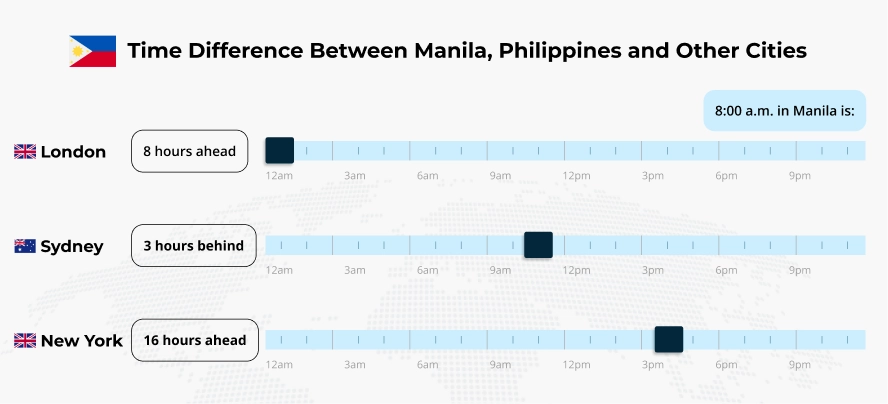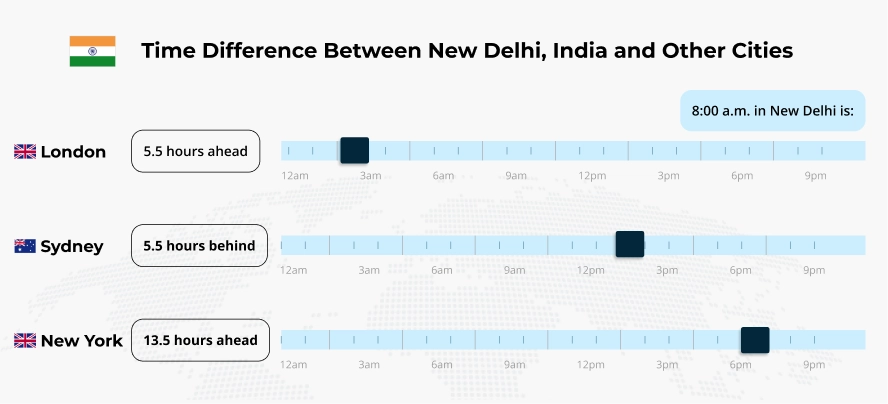Offshoring Destination Insights: Evaluating the Philippines and India

Interest in offshoring as a viable response to the growing talent shortages facing many nations is increasing worldwide. As organisations become more aware of the benefits that offshoring offers, numerous companies are investigating various international locations to establish their offshore teams.
The Asia-Pacific (APAC) region, encompassing the southeast, east, and southern parts of Asia and Oceania, stands out among various options, offering a skilled labour force, cost-effective services, and robust infrastructure. It is also home to two of the most popular offshoring centres: India and the Philippines.
Companies looking to relocate their offshore accounting operations continue to prefer India and the Philippines.
Why Are India and the Philippines Popular Offshoring Destinations?
India is acknowledged historically as a leading global hub for outsourcing. The information technology (IT) and business process outsourcing (BPO) sectors are projected to bring in $350 billion in revenue by 2025. Furthermore, over 5.4 million individuals are employed in the IT-BPO industry. Cities in India, such as Bangalore, Hyderabad, and Mumbai, are famous for their skilled tech workforce. These benefits make India especially appealing to companies that need specialised employees for IT among others.

Despite India's reputation as a pioneer in the BPO sector, the Philippines has emerged as another preferred alternative destination for offshore talent within the APAC region, particularly evident in areas like voice support and financial services, including offshore accounting.
In fact, around 2-3% of companies are transitioning their operations from India to the Philippines for these positions. This development is not unexpected, given that the Philippines boasts a robust pool of English-speaking professionals and a business environment that aligns well with Western corporate practices. For companies aiming to optimise their accounting functions without sacrificing expertise, the Philippines has become the go-to location.
A Closer Look on India and the Philippines as Offshoring Destinations

Image by Eyeem from Freepik: https://www.freepik.com/premium-photo/portrait-smiling-colleagues/.
Recent studies have shown the advantages that businesses can have by offshoring a wide range of operations, roles, and initiatives to the Philippines and India. These nations are among the top offshore destinations worldwide, serving as essential Asian hubs for offshoring services, with the 2023 Kearney Global Services Location Index reporting India as the first and the Philippines as the 12th out of 78 countries.
Although choosing between these countries for your talent pool continues to be advantageous for international companies, let us examine their strengths to determine which country, India or the Philippines, offers the best fit for your remote talent. Additionally, we will assist you in choosing the most suitable outsourcing destination for your needs.
1. English Proficiency
Indians are native English speakers because the country was once a British colony. However, did you know that when it comes to English proficiency, the Philippines outperforms India?

Source: EF English Proficiency Index' Global Ranking of Countries and Regions 2024
Asia has the broadest range of English proficiency levels compared to other areas. India is considerably ahead of its neighbours in speaking English, and the Philippines has a competency band of "high." Education First's most recent English Proficiency Index made this clear.
For non-complex professions, a modest level of English proficiency may be adequate, but a deeper comprehension of the language is required to complete critical responsibilities. Talents with a high degree of English proficiency, such as Filipinos and Indian professionals, are preferred by foreign employers.
2. Cultural Compatibility

Image by Freepik: https://www.freepik.com/free-photo/smiley-people-giving-thumbs-up/.
Cultural compatibility is also a crucial factor to consider when offshoring to India and the Philippines due to the differences between the two nations.
India matches its skills to Western work methods and cultural norms. Businesses use Western business methods to help Indian talent become more adaptable.
Despite being an Asian nation, Spain and the US influenced the Philippines significantly due to their more than 300-year colonisation. Their taste in sports, music, and even idioms and slang reflect this.
India came in at number 40 on InterNation's Expat Insider 2023 list of the best places to work and play, while the Philippines came in at number 9. The research offers insights into the daily lives of more than 12,000 foreign-born people worldwide. According to these statistics, international clients know how well the working cultures of the Philippines and India among other nations fit.
You can read more about it here: Why People Choose the Philippines and India as Offshoring Locations for Their Business and Travel.
3. Time Zone
Another thing to think about is the time zone difference between these places and the primary location of your business.
For example, India is only 5.5 hours and Manila is 3 hours behind of Australia. Since there is little time difference between the two nations, managing and contacting your offshore crew is easier. The majority of both countries are in the office at the same time, ensuring no disturbance to workflow. Depending on other nations who wish to acquire their talents in India and the Philippines, it is common for both countries to offer flexible hours of operation.


4. Digital Infrastructure

Image by Freepik: https://www.freepik.com/free-photo/representation-user-experience-interface/.
Digital infrastructure is the foundation of the current digital world, enabling cloud computing, data management, communication technologies, and internet access.
India's 2025 focus in the telecom sector is unmistakably centred on execution. Recent infrastructure and policy changes have laid the groundwork for growth and accelerated digitalisation. The government is now translating these changes into tangible outcomes. A key element of this forward-looking initiative is the 2023 Telecommunications Act (Telecom Act) with the government issuance of telecom regulations for infrastructure.
The Philippine government continues to enhance their digital infrastructure through procedural simplification. Currently, eight major internet providers offer fibre-optic and satellite technologies in the largest cities, enabling faster connectivity and more efficient work for remote employees.
The Philippines is entering an exciting new phase in a rapidly changing technological landscape. With support from South Korea's advanced digital expertise, the country is establishing a collaboration that could transform its future. This partnership — the Korean-Philippine Economic Innovation Partnership Program (EIPP) — marks a significant step forward in the nation's digital transformation. The initiative aims to modernise the digital infrastructure of the Philippines.
Continuous improvement of the digital infrastructure in the Philippines and India promotes innovation and economic growth while improving efficiency, connectivity, and scalability. It is essential for individuals, governments, and organisations.
5. Cost Effectiveness and Industry Strengths

Image by Rawpixel.com from Freepik: https://www.freepik.com/free-photo/diverse-people-working/.
Although both nations have affordable outsourcing options, the cost structures may vary depending on the sector. Because of its strong service-oriented workforce, the Philippines excels at providing abilities in accounting, administrative support for any industry, and customer service, among others. On the other hand, India is a software development and IT powerhouse that offers cutting-edge technologies and reliable solutions to multinational corporations.
Because of their reasonably priced cost of living, which reflects their competitive salaries, India and the Philippines may provide affordable talent options. India ranked 191st out of 197 nations in the International Cost of Living Calculator, while the Philippines is ranked 152nd. One of the main reasons India can provide reasonably priced talent solutions is the country's low cost of living. However, building a remote team in the Philippines is even more cost-effective due to the country's average monthly salary.
Final Thoughts

Image by Frolopiaton Palm from Freepik: https://www.freepik.com/premium-photo/group-business/.
Hiring and managing offshore employees from the Philippines and India can be simple with the right partner. You don’t have to start from scratch or wait long to get started — your partner can help you right away.
For tips on choosing the best offshoring partner, check out this guide.
At Unient, our customised solutions give you control over remote team productivity and quality while providing support to streamline management.
Contact our Solutions Experts today to learn how we can make your offshoring journey successful!
 Australia
Australia India
India New Zealand
New Zealand Philippines
Philippines USA
USA